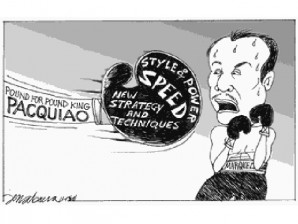The Occupy Wall Street Movement, which has become global, has an alternative name: “We are the 99 percent.” The 99 percent means the 1 percent of the world is benefiting the most from a liberalized, deregulated global economy.
Take the United States, the share of the top 1 percent in the national income in 1933 was 33.3 percent, with the 66.7 percent going to the rest of the 99 percent. Four decades of Keynesian government spending and ILO-style tripartite approach in socioeconomic programming helped increase the share of the bottom 99 percent to a more egalitarian 80.1 percent by 1976.
However, after three decades of liberalization, deregulation and privatization, the share of the top 1 percent was back to the one-third share of the US national economic pie—34.6 percent as of 2007. In an article for the US Council on Foreign Relations, George Packer gave shocking statistics—the American CEOs in the 1970s earned on the average 40 times as much as their lowest-paid employees; in 2007, the ratio was more than 400 to 1.
Globally, the ILO has also been producing reports warning that rising GDP and growth in productivity under globalization has been accompanied by deepening inequality and even joblessness in many countries, including declining share of global wages versus global productivity.
In the Philippines, a former administrator of the National Statistics Office, Tomas Africa, examined the percentile income data of the last three decades. He came up with the following conclusions: There was no major change in inequality in 1985-2009.
In 1985, the top 1 percent got 32 percent of the national income; in 2009, the top 1 percent still got the 30 percent. As to the bottom 50 percent, they got 20 percent of the total income in 1985 and also 20 percent in 2009. So the good news, according to Africa, income distribution has not worsened. The bad news: it has not improved either. Further, there is no visible middle class in the Philippines.



